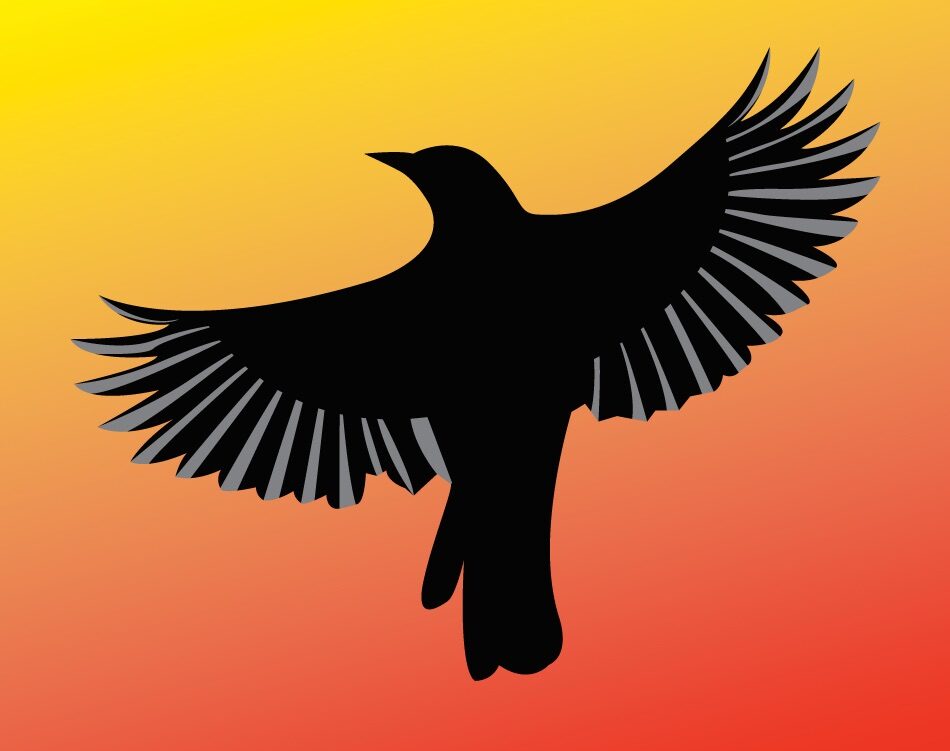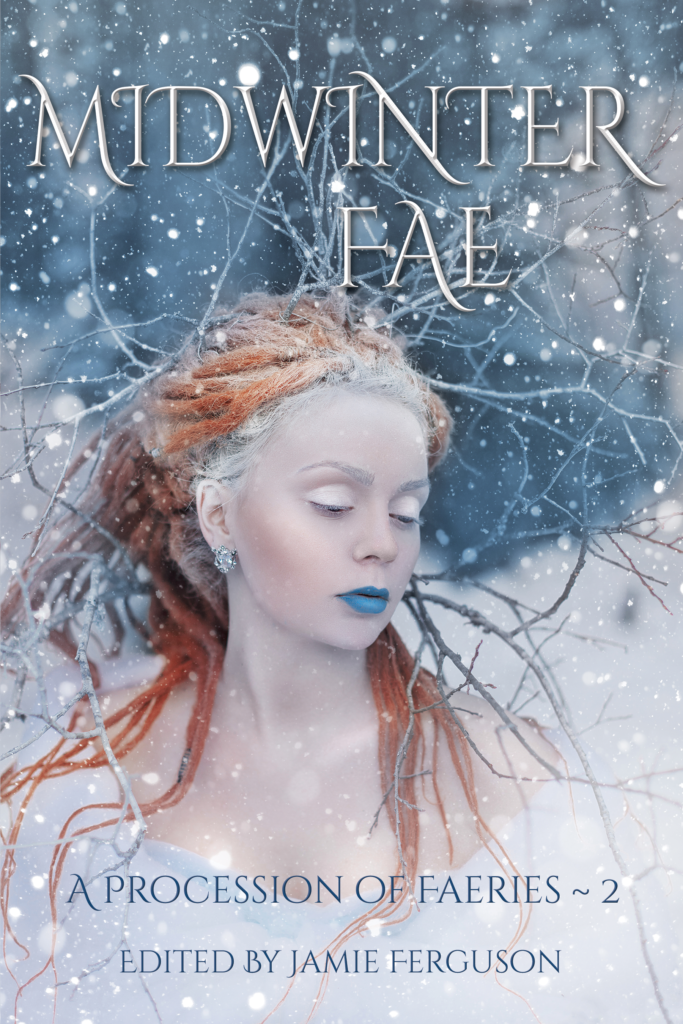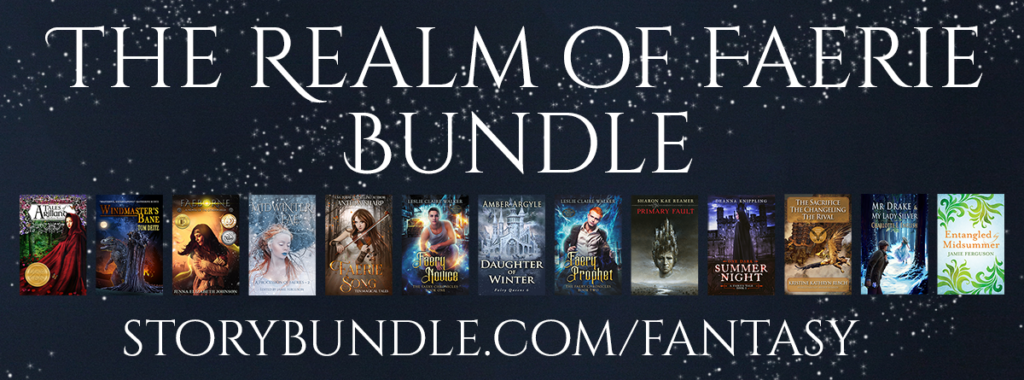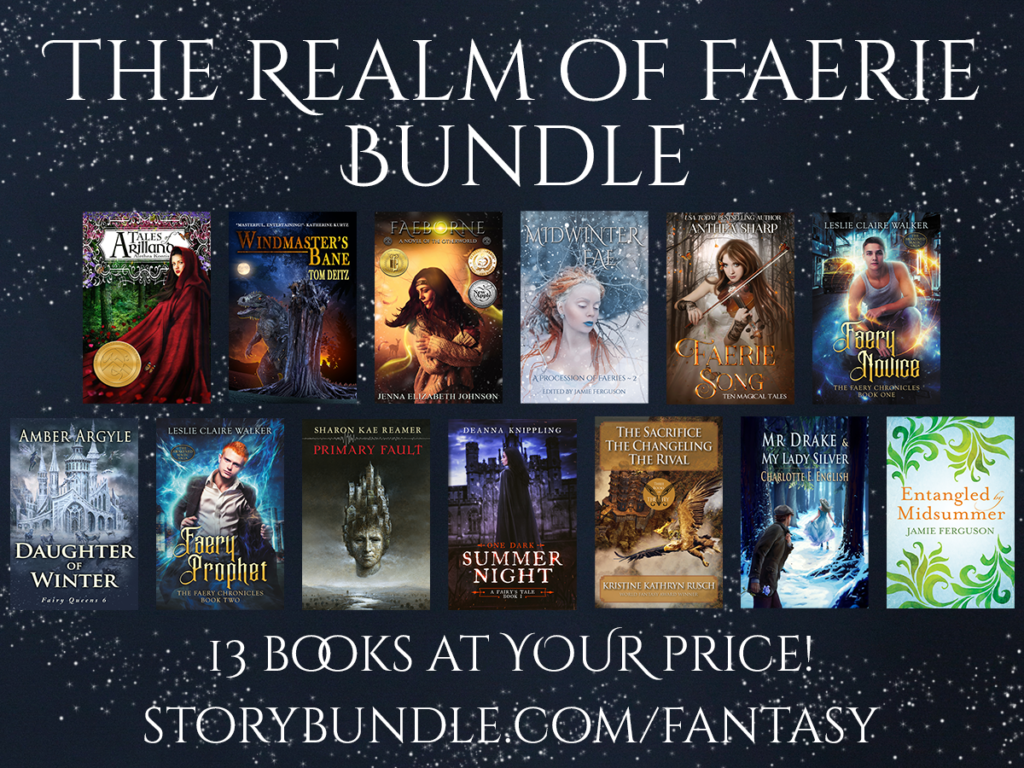Interview: Midwinter Fae authors – Part 3
Midwinter Fae, the second volume in the anthology series A Procession of Faeries, brings you nineteen tales of magic, beauty, wonder…and sometimes danger, as the Fae can be unpredictable, and follow their own rules.
Midwinter Fae is available for a limited time in The Realm of Faerie bundle.
Enter the Realm of Faerie, a world of beauty, danger, and enchantment. But remember the legends if you want to make it back home again…
The Interview
Part 3 of the Midwinter Fae author interview includes:
- Leah Cutter, author of “The Ice Skating Fairy”
- Leslie Claire Walker, author of “Treasure”
- Ron Collins, author of “First Rays of New Sun”
What do you enjoy about weaving elements from mythology, legends, and folklore in your own writing?
Leah Cutter
What I most enjoy is taking a well-known story or trope and turning it on its head. I’ve always thought that a lot of those myths and legends were about society looking into a mirror and seeing either the best (or the worst) it could be. I like to make it more of a funhouse mirror. The reflection comes through dark and twisted.
Ron Collins
I’ve written several stories that touch specifically on mythology around the fae, and to be honest I think the reason it’s fun is that it’s difficult to do it well. At least it is for me. I mean, I went through a period when I read a lot of the field that was being p—and in the end, I find that fun.
Part of this is probably that in working at it, I learn a lot—and that, especially as I’ve gotten along as a writer, I’ve taken to push myself into blending genres a bit more often, and that’s both tricky and fun. I like to think that bringing myself into the things I play with means I end up taking fresh looks at things that no one else would, and that’s always fulfilling.
What do you find most interesting about the mythology/folklore associated with Midwinter?
Leah Cutter
I am such a seeker of the light. So I really enjoy the midwinter stories that go from darkness into light. Sure, it may start off in a very dark place, but eventually we get through that tunnel, past the hero’s journey, and back into the warmth and growth of spring.
Leslie Claire Walker
Midwinter is my favorite time of year. I love all things Yule, including folklore about Yule and its twin, Summer Solstice—specifically, the story of the Oak King and the Holly King. I love the idea of our consciousness traveling inward a bit, taking a break from so much outward activity to allow feelings, thoughts, and information to rise from deep within and shape the coming year.
Ron Collins
The Midwinter solstice is a pivotal time, right? I love the idea of the cycle of life that it represents. It’s the time for endings and fresh beginnings—which is a really powerful idea in the end. I like that writers can play so directly with life and death in this setting. That was Something that was firm on my mind when I sat down to write “First Rays of New Sun.”
Mythology and fairy tales often incorporate aspects from the locale in which they originated. For example, selkies appear in folktales from the Northern Isles of Scotland, the Faroe Islands, and Iceland. Is there an area of the world that you particularly enjoy including in your writing, whether from a mythological aspect, a geographical one, or both?
Leah Cutter
I take my myths from all over. I do try to borrow from mythology that not everyone is familiar with. For example, I’ve retold Hungarian myths, as well as Chinese and Siberian. I also love making up my own mythology for my fantasy worlds. Those are also very much based on the location of the people there. I strongly believe the creation myths of a people influence everything about them. I generally start with the creation myths and go from there. However, the creation myths are also always influenced by the area.
Leslie Claire Walker
I love Ireland. I’m fortunate enough to have traveled there several times, and to spend a good part of my days there exploring old sacred sites, from the Hill of Tara to Newgrange to Owenygat (the Cave of the Cats). Most of my understanding of myth and folklore was born of the adventures I had while there.
Ron Collins
Well, going back to your earlier question, the local aspect of mythology is something that makes using it so interesting. Settings change everything. The fae I wrote about in a story set in the modern-day deep south (which I used in an Uncollected Anthology a few years back), and those I wrote about in this story are quite different—as are the godlike paranormals I used in your earlier project, Beneath the Waves bundle.
I don’t really set down to write about mythology of a specific location, so much as once I figure out where I’m writing from, I want to spend time learning about what makes the place magical, and then go from there. I recently published “The Robin Club,” for example, that was set in an alternate-world version of Brooklyn and focused on baseball and sports fandom. I envisioned the magic of that environment as coarse and gritty rather than sleek and sexy—a mythology that comes more from friction than anything else. So, to me it was only natural that the most powerful and supernatural elements of that story were just that.
So, yeah, I’d say my locations drive me to think about the nature of the tale than any particular need of my own to venture into a specific zone.
Is there something from a legend, fairy or folk tale, or myth that you haven’t yet used in your writing, but would like to?
Leah Cutter
Some year, I’m going to write a Cinderella story, mixed and twisted with the myth of the phoenix and rising from the ashes.
Ron Collins
I’m sure there is, but my brain hasn’t let me in on the secret, yet!
Question for Leah Cutter:
Cindy is sidelined with a fractured tibia in “The Ice Skating Fairy,” unable to perform in the midwinter jubilee she’d been looking forward to. The fairy she befriends is dealing with a loss of her own. What did you most enjoy about writing the interaction between these two characters?
I really enjoyed being able to make them a little immature and more teenaged than most of my characters. They don’t know everything though they feel pressured to act as if they do. Being younger characters they tend to say exactly what’s on their mind. They don’t lie yet, not like adults.
Question for Leslie Claire Walker:
Addie pays quick cash for cursed objects in “Treasure.” She does this to keep them safe from their owners, and their owners safe from them. What inspired you to write this story, and do you plan to write any other stories in this very interesting world?
I wrote this story as a kind of exorcism. That’s a heavy answer, right? Sometimes, it’s like that. Every bloodline has secrets, and everyone has regrets, and some people give far more than they receive—or spend their lives trying to redeem past mistakes. So, sometimes I write stories as a way to give the souls of my ancestors some peace, and to let them know they are still loved.
In the Jewish tradition in which I was raised, when someone passes away, we say, “May their memory be for a blessing.” In a reciprocal vein, I feel it’s my joyful obligation to bless their memory as well.
To be clear, there are no characters in Treasure that correspond directly to any of my people—just a sincere wish on my part to shine a little healing light into shadowed corners.
The world I created in Treasure certainly provides a lot of rich territory to explore, so it’s likely that I’ll revisit it in the future—as soon as another tale rises to the surface and demands to be told.
Question for Ron Collins:
“First Rays of New Sun” combines faery mythology with an interesting twist—for the fae wield power over more than just humans. Which of the elements in this story that are based on folklore and mythology are your favorites, and why?
The whole idea of how fae magic works is interesting in itself, isn’t it? What, exactly, is that power? Where does that power come from? It’s religious in its own sense, but carries an paganistic essence of nature rather than the more hierarchical elements of our more modern day views, I suppose.
Like I said earlier, I loved the feeling of endings and beginnings associated with the theme, but I also wanted to play with genre a bit. Once I played with the theme a little, as you note, I began to think about the idea of the allure the fae have on us as human beings–both those inside the story as well as us as readers. The fae are attractive, right? Meaning the concept of multiple worlds alongside our own—which we often think of as science fiction these days, but is obviously as old as the first faeland tales—is interesting, and the existence of immortal creatures of both savage beauty as well as sometimes savage disregard for anyone but themselves is always going to draw interest.
I mean, who doesn’t fall for the beautiful bad boy, right?
So, yeah, there are mechanical elements in “First Rays of New Sun” that I like. The idea of consuming food is a lever used to trap a human, for example, and the basic structure of what a midwinter celebration would look like. They’re all fun. But what I enjoyed most here was leveraging them into a narrator who I found to be fun to inhabit, and who in retrospect I hope readers will be able to relate to in ways that might surprise them.
Find the authors!
Leah Cutter
Website ~ Facebook ~ BookBub ~ Amazon ~ Goodreads
Leslie Claire Walker
Website ~ Facebook ~ Twitter ~ Amazon ~ Goodreads ~ BookBub
Ron Collins
Website ~ Facebook ~ Twitter ~ BookBub ~ Amazon ~ Goodreads
Find The Realm of Faerie bundle!
This bundle is available for a limited time at StoryBundle.com/Fantasy.
Bundle buyers have a chance to donate a portion of the purchase price to the charities Mighty Writers and Girls Write Now!



